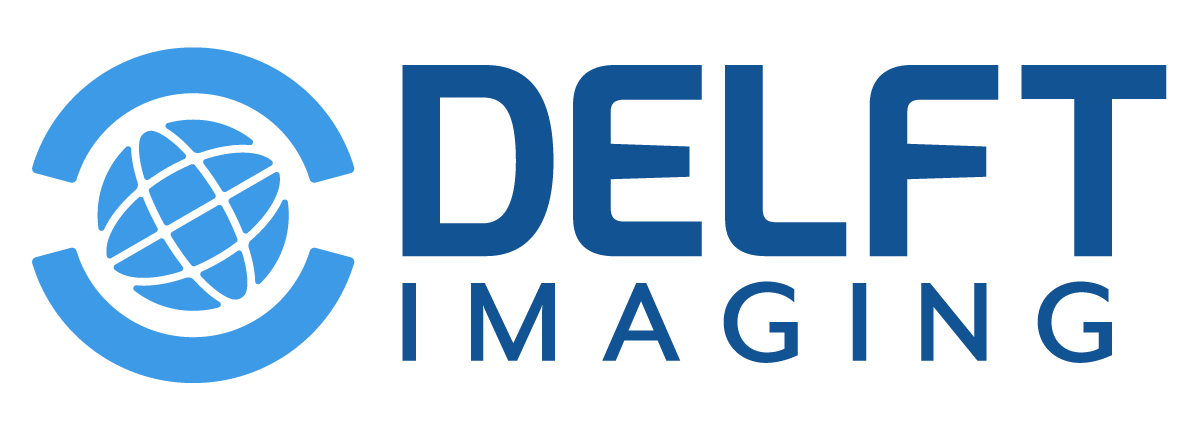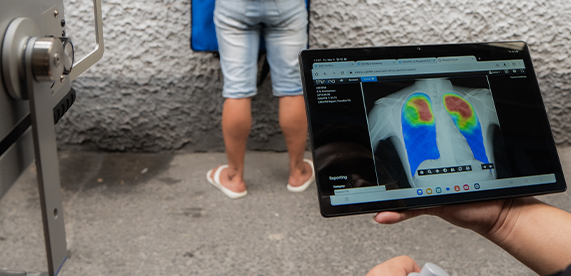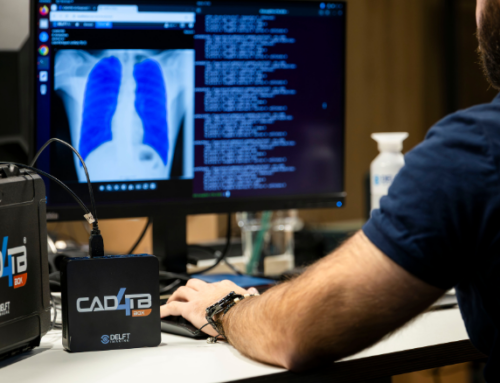Tuberculosis (TB) continues to be a global health issue, with numerous cases going undiagnosed annually. At Delft Imaging, we are committed to addressing this challenge by leveraging technology that strengthens health systems. A recent independent, multi-country study confirmed that CAD4TB is the highest-performing algorithm in automated chest X-ray (CXR) analysis for TB triage.
The study spanned seven countries in sub-Saharan Africa (Madagascar, South Africa, Tanzania, Uganda), South Asia (India), and Southeast Asia (the Philippines and Vietnam). It involved 3,927 participants with prolonged cough symptoms, a key indicator of presumptive TB. Five leading CAD systems were evaluated to compare their diagnostic performance against a microbiological reference standard.
This diverse geographical representation ensured that the algorithms were tested in a variety of real-world conditions, reflecting the different settings and populations they encountered. By evaluating the effectiveness of CAD algorithms, the study aimed to enhance TB triage and detection, ultimately improving timely diagnosis and treatment.

How Was the Study Conducted?
Participants in the study underwent comprehensive evaluations for pulmonary TB, including sputum collection for Xpert MTB/RIF Ultra testing and culture. The performance of the CAD algorithms was assessed against a microbiological reference standard, focusing on metrics such as the area under the receiver operating characteristic (ROC) curve (AUC), sensitivity, and specificity. The WHO sets the target accuracy for TB triage tests at ≥90% sensitivity and ≥70% specificity.
Key Findings
- Highest Accuracy: The AUC for the CAD algorithms ranged from 0.774 to 0.819. CAD4TB achieved the highest AUC of 0.819, demonstrating unparalleled accuracy and outperforming all other algorithms tested.
- Sensitivity and Specificity: At a fixed sensitivity of 90%, CAD4TB achieved the highest specificity of 73.8% (95% CI 72.2-75.4), meeting the WHO’s minimum target accuracy for TB triage tests.
- Performance Variability: The study noted significant variability in accuracy across different countries and populations. Results showed that CAD4TB’s performance was consistent across various countries and subgroups regardless of diabetes status, underscoring its value in TB-endemic regions with higher diabetes prevalence.
Why Are These Findings Important?
The study’s findings underscore the exceptional performance of CAD4TB among the evaluated algorithms. By achieving the highest overall accuracy and specificity, CAD4TB demonstrates its potential to enhance TB triage, particularly in resource-limited settings. The algorithm’s ability to meet and exceed the WHO’s minimum target accuracy facilitates quicker and more reliable identification of TB cases, supporting timely treatment and reducing transmission.
100th Publication Milestone
This study marks CAD4TB’s 100th publication milestone. With over 100 scientific publications covering topics such as TB, silicosis, and other abnormalities, CAD4TB continues to lead in research and innovation in CAD technology.
Implications for TB Detection
The continuous refinement of CAD, particularly CAD4TB, based on real-world data is essential to improving their accuracy and reliability. By integrating AI-driven solutions like CAD4TB into routine TB detection programs, frontline health workers can help bridge gaps in TB case detection, leading to better health outcomes globally. This multi-country study provides valuable insights into the superior performance of CAD4TB, offering a robust framework for its deployment in diverse settings.
For more detailed information, you can access the complete preprint study here:






